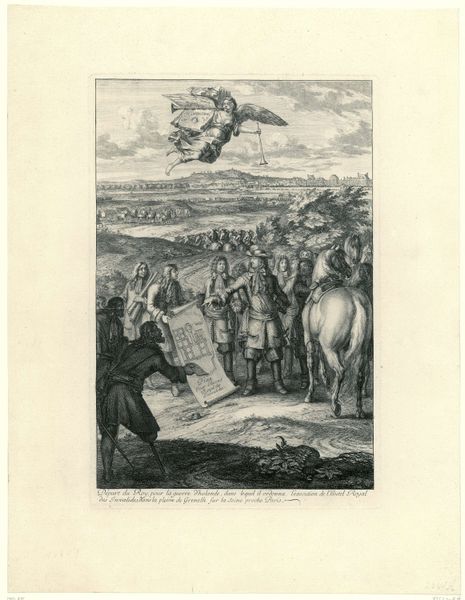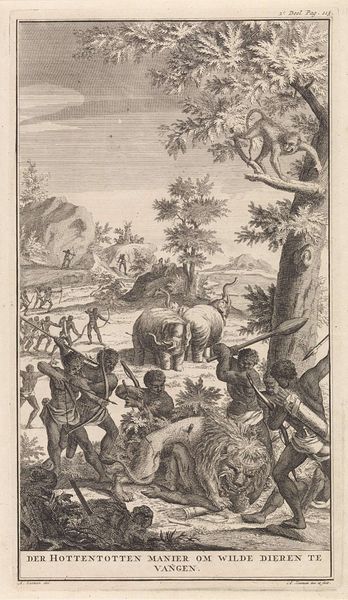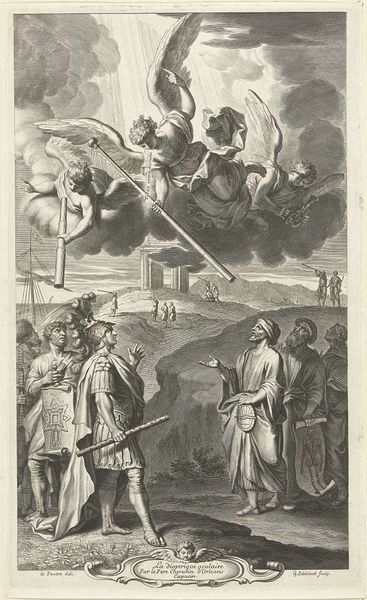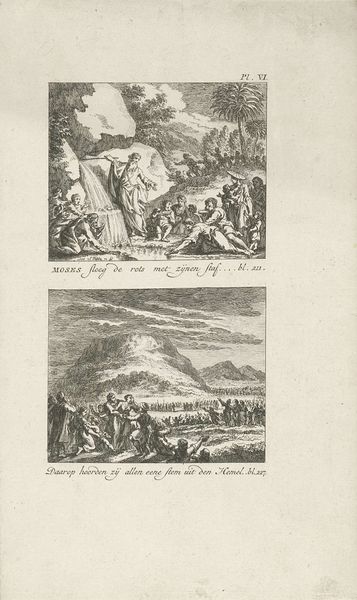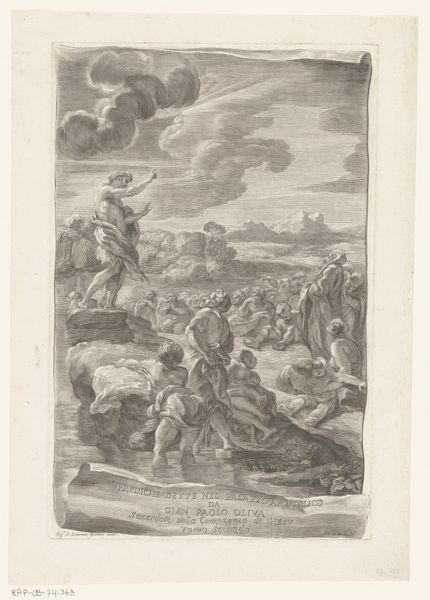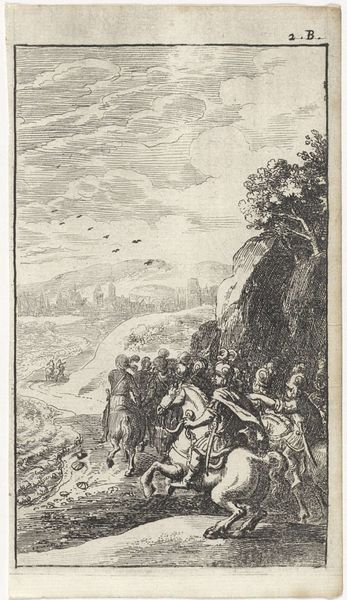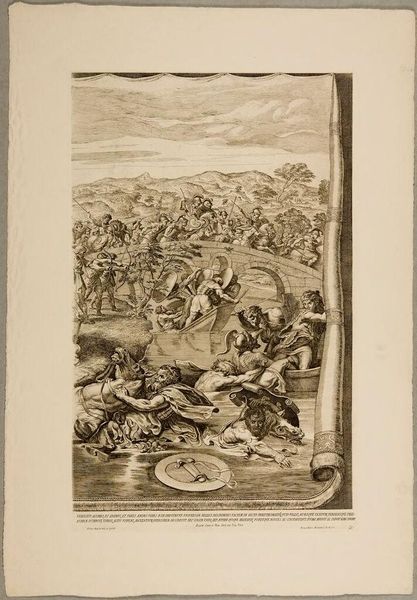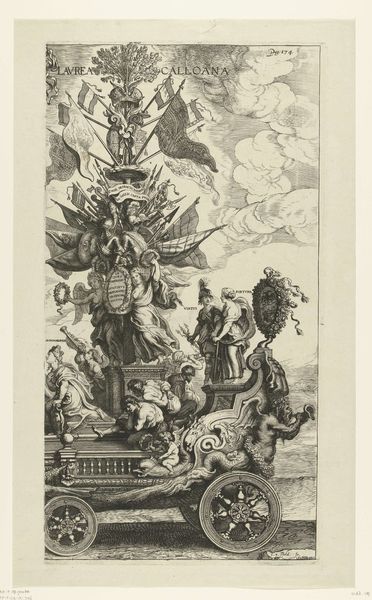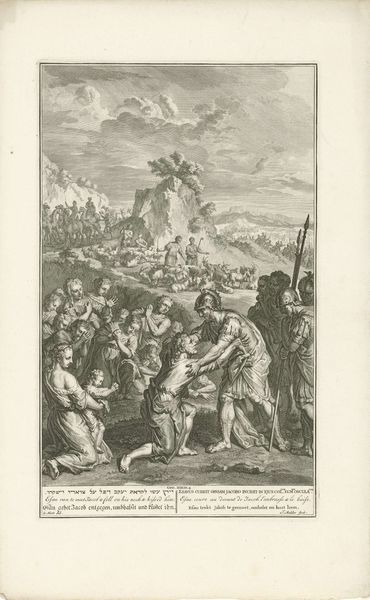
Triomfwagen van Kallo (linkerhelft); intocht van Ferdinand te Antwerpen in 1635 (nr. 43) 1639 - 1641
0:00
0:00
print, engraving
#
narrative-art
#
baroque
# print
#
figuration
#
cityscape
#
history-painting
#
engraving
Dimensions: height 543 mm, width 328 mm
Copyright: Rijks Museum: Open Domain
Curator: The intensity of the details really jumps out at you, doesn't it? Editor: Absolutely, it’s a chaotic energy; all the lines and intricate details, yet the image also has this underlying sense of formality, as if attempting to reign in the exuberance through structured composition. Curator: Indeed, we are looking at "Triumphal chariot of Kallo (left half); Entry of Ferdinand into Antwerp in 1635 (no. 43)" a print made between 1639 and 1641 after Theodoor van Thulden. This work forms part of a larger series documenting the festivities surrounding Cardinal-Infante Ferdinand's arrival in Antwerp. This print gives insight into the rituals of power, politics of imagery, and spectacle central to civic life in 17th-century Antwerp. Editor: The choice to use the triumphal chariot immediately locates the moment within an established visual rhetoric of power and status. What resonates for me, however, is thinking about its placement in society and its effects on public perception and even the very performance of civic identity. In what ways can we consider this work as shaping a dialogue about how gender and social positions intersect to form perceptions of belonging, hierarchy, and perhaps even resistance in the 17th-century social fabric? Curator: It’s impossible to ignore those power dynamics, and there's certainly an argument to be made about the controlled dissemination of imagery solidifying social hierarchies and their impact in performative actions of identity. Here we see the city celebrating and displaying the strength of the governing powers to an international audience. It is a demonstration of the might, and arguably, its cultural sophistication. Editor: Do you think that sophistication also speaks to the ways marginalized bodies could resist that spectacle? Was this an attempt to incorporate that perspective into how these kinds of processions played out? Curator: That’s a fascinating question and very hard to fully assess centuries later but bringing those readings to the forefront helps unpack it as a work that existed in social, political, and historical interplay. It makes for an intellectually engaging work. Editor: I completely agree. Seeing the way this print creates an invitation to scrutinize and debate the layers of authority and reception is what keeps me wanting to explore this work.
Comments
No comments
Be the first to comment and join the conversation on the ultimate creative platform.
